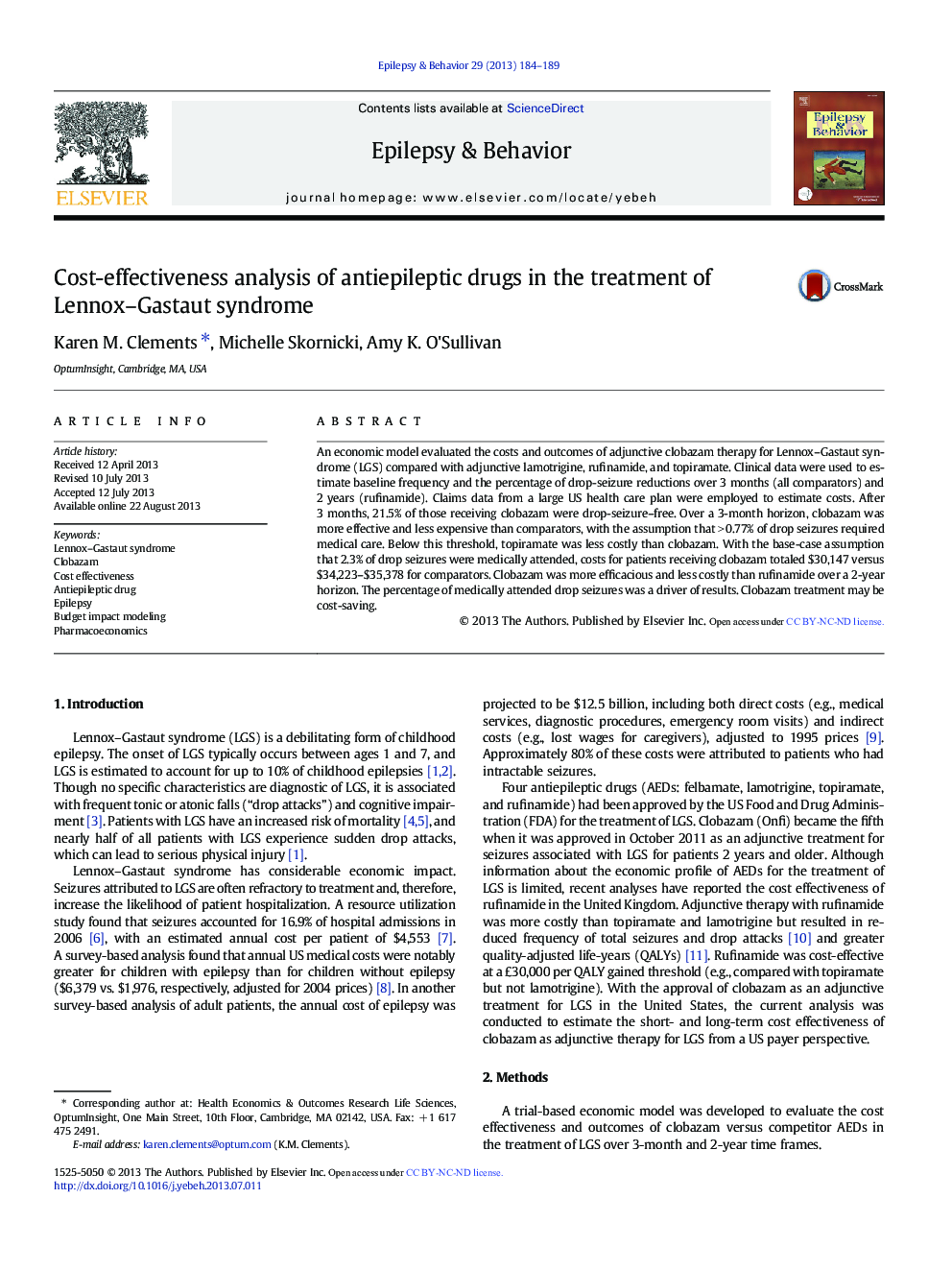| Article ID | Journal | Published Year | Pages | File Type |
|---|---|---|---|---|
| 6013095 | Epilepsy & Behavior | 2013 | 6 Pages |
â¢Economic model evaluated costs/outcomes of clobazam as adjunctive therapy for LGS.â¢Percentage of medically attended drop seizures was a driver of model results.â¢Clobazam was more efficacious/less costly vs. lamotrigine/rufinamide/topiramate.â¢Clobazam leads to lower costs via reduction in medically attended drop seizures.
An economic model evaluated the costs and outcomes of adjunctive clobazam therapy for Lennox-Gastaut syndrome (LGS) compared with adjunctive lamotrigine, rufinamide, and topiramate. Clinical data were used to estimate baseline frequency and the percentage of drop-seizure reductions over 3Â months (all comparators) and 2Â years (rufinamide). Claims data from a large US health care plan were employed to estimate costs. After 3Â months, 21.5% of those receiving clobazam were drop-seizure-free. Over a 3-month horizon, clobazam was more effective and less expensive than comparators, with the assumption that >Â 0.77% of drop seizures required medical care. Below this threshold, topiramate was less costly than clobazam. With the base-case assumption that 2.3% of drop seizures were medically attended, costs for patients receiving clobazam totaled $30,147 versus $34,223-$35,378 for comparators. Clobazam was more efficacious and less costly than rufinamide over a 2-year horizon. The percentage of medically attended drop seizures was a driver of results. Clobazam treatment may be cost-saving.
